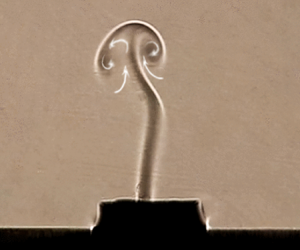Article contents
Experiment of a thermal plume on an open cylinder
Published online by Cambridge University Press: 25 October 2023
Abstract

In this study, we performed a set of experiments of the thermal plume on an open cylinder heated from below and a simple scaling analysis. The flow structure of the plume was visualized using the shadowgraph technique, and the temperature at specific points was measured using a thermistor. Transient plumes in a developing stage, an equilibrating stage and a fully developed stage were described. The new scaling laws of the stem radius and the velocity of the rising plume were presented, which are different from those on a two-dimensional heated plate due to the cylindrical effect and agree with experimental results. In the fully developed stage, there is a transition route of the plume from a steady to chaotic state with an increase in the Rayleigh number, which involves a series of bifurcations. A reverse bifurcation from a periodic (Ra = 1.17 × 106) back to a steady (Ra = 1.30 × 106) state has been observed in the experiment, which is referred to as the period bubbling bifurcation. Thus, the present experimental results validate the previous numerical results presented by Zhang et al. (Phys. Fluids, vol. 33 (6), 2021, 064110). The bifurcation diagram, spectral analysis and attractor are used to characterize the transitional plume. In addition, the heat and mass transfer have also been quantified.
JFM classification
- Type
- JFM Papers
- Information
- Copyright
- © The Author(s), 2023. Published by Cambridge University Press
References
- 2
- Cited by



